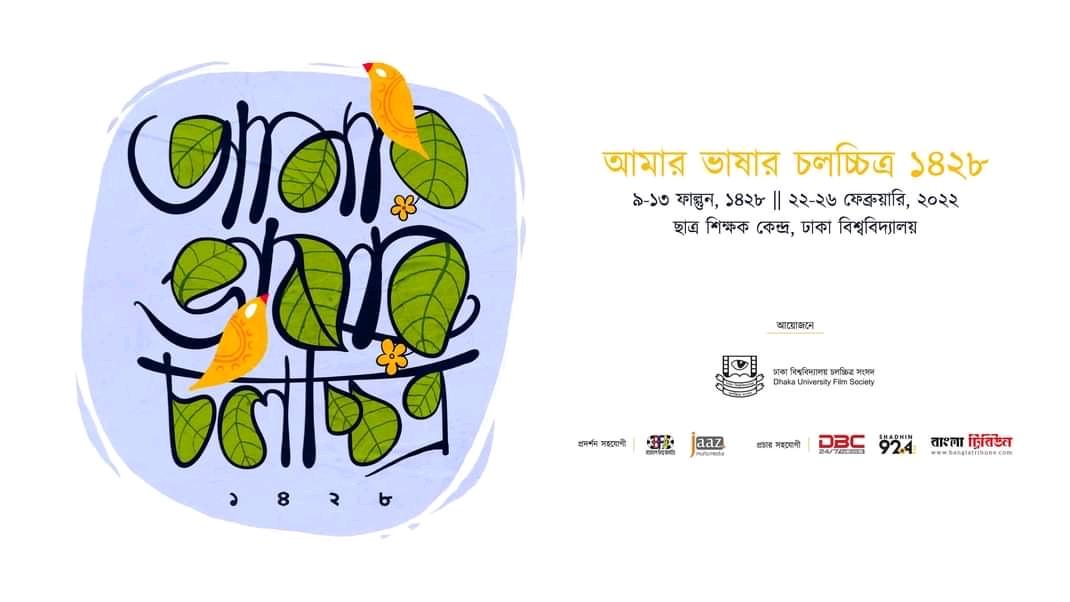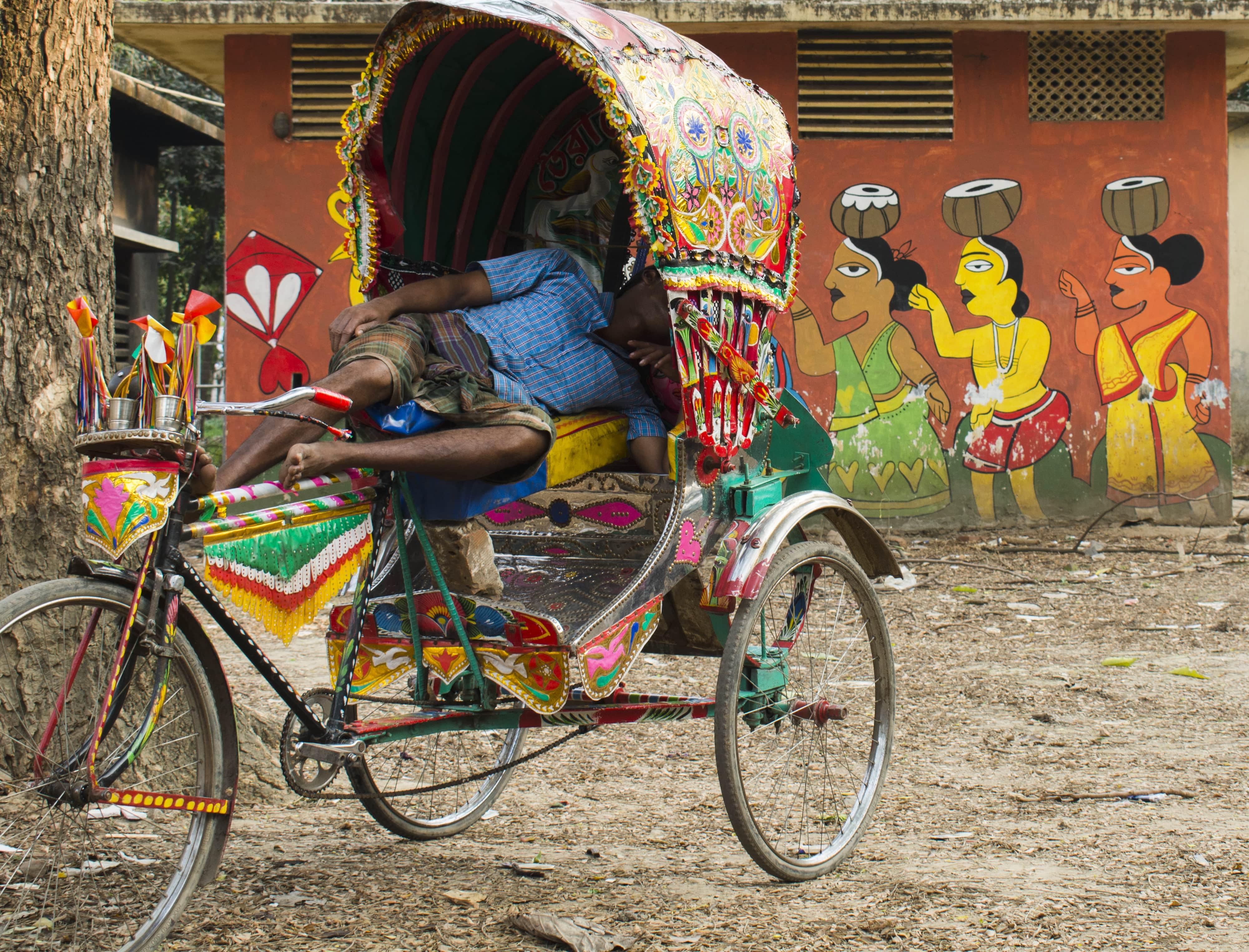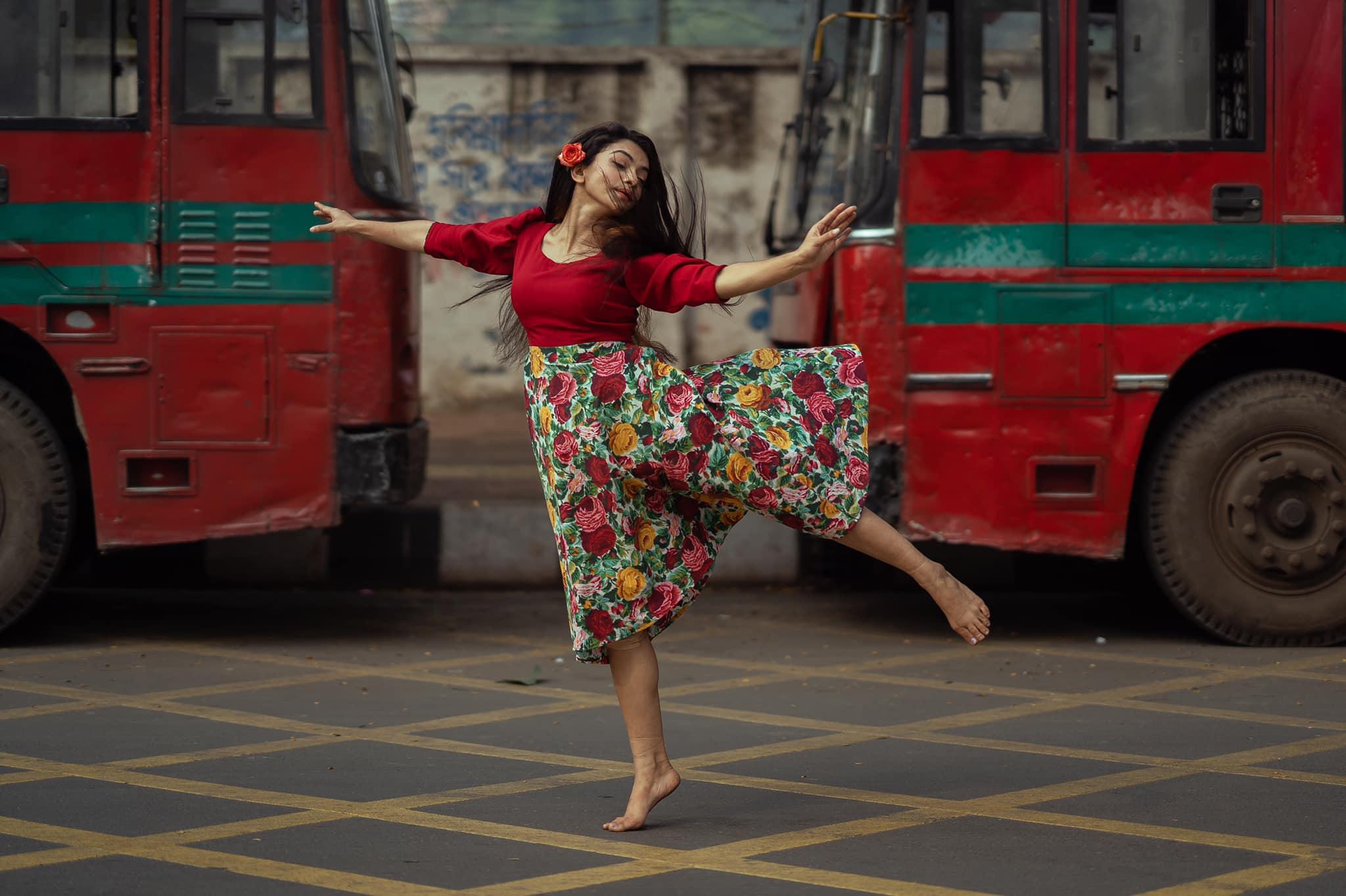𝗪𝗼𝘂𝗹𝗱 𝘆𝗼𝘂 𝗹𝗶𝗸𝗲 𝘁𝗼 𝗱𝗮𝗻𝗰𝗲? 𝗕𝗮𝗹𝗹𝗲𝘁 - 𝗣𝗮𝗿𝘁 𝗼𝗻𝗲.
By now, probably all of us have seen snaps from the recent photo of Mubashshira Kamal Era's ballet dance in front of Raju Memorial Sculpture of Dhaka University (DU) on social media.
It is now trending on social media as critics are sharing their views on it. Certainly, we have seen some of them too, but how much do we know about ballet dance?
Ballet is an art form created by the movement of the human body. It is theatrical, which means it's performed on a stage to an audience utilizing costumes, scenic design, and lighting. Ballet can narrate a story or voice a thought, concept, or sentiment. Ballet dance can be magical, exciting, provoking, and sometimes disturbing.
Ballet originated in the Italian Renaissance courts of the 15th century. It originated from the upper class of the society, mainly from their lavish events, especially wedding celebrations. In the 16th century, Catherine de Medici — an Italian noblewoman, wife of King Henry II of France, began to fund ballet in the French court. Her enchanting festivals boosted the blossoming of ballet de cour, a program that possessed dance, decor, costume, song, music, and poetry.
A century later, King Louis XIV helped to popularize and standardize ballet. By 1661, a dance academy had opened in Paris, and in 1681 ballet shifted from the courts to the stage. The French opera 𝘓𝘦 𝘛𝘳𝘪𝘰𝘮𝘱𝘩𝘦 𝘥𝘦 𝘭’𝘈𝘮𝘰𝘶𝘳 incorporated ballet elements, forming a long-standing opera-ballet tradition in France. Early classical ballets such as 𝘎𝘪𝘴𝘦𝘭𝘭𝘦 and 𝘓𝘢 𝘚𝘺𝘭𝘱𝘩𝘪𝘥𝘦 originated during the Romantic Movement in the first half of the 19th century.
In the early part of the 20th century, Russian choreographers Sergei Diaghilev and Michel Fokine began to experiment with movement and costume, moving beyond the confines of classical ballet form and story. He introduced what is now known as neoclassical ballet, an expansion on the classical form. He also is regarded by many as the grandest innovator of the contemporary “plotless” ballet. With no definite storyline, its aim is to use movement to depict the music and to illustrate human emotion and endeavor.
Today, ballet is multi-faceted. Classical forms, traditional stories, and contemporary choreographic innovations intertwine to produce the character of modern ballet.
We can also see various categories of ballet - story ballets, plotless ballets, and different styles among them - classical, neoclassical, and contemporary. In the second part, we will dive into these categories and styles.
#studentJournalist
In Photo - Mubashshira Kamal Era;
Photo taken by - Joyeeta Afrin Trisha.
𝗪𝗼𝘂𝗹𝗱 𝘆𝗼𝘂 𝗹𝗶𝗸𝗲 𝘁𝗼 𝗱𝗮𝗻𝗰𝗲? 𝗕𝗮𝗹𝗹𝗲𝘁 - 𝗣𝗮𝗿𝘁 𝗼𝗻𝗲.
By now, probably all of us have seen snaps from the recent photo of Mubashshira Kamal Era's ballet dance in front of Raju Memorial Sculpture of Dhaka University (DU) on social media.
It is now trending on social media as critics are sharing their views on it. Certainly, we have seen some of them too, but how much do we know about ballet dance?
Ballet is an art form created by the movement of the human body. It is theatrical, which means it's performed on a stage to an audience utilizing costumes, scenic design, and lighting. Ballet can narrate a story or voice a thought, concept, or sentiment. Ballet dance can be magical, exciting, provoking, and sometimes disturbing.
Ballet originated in the Italian Renaissance courts of the 15th century. It originated from the upper class of the society, mainly from their lavish events, especially wedding celebrations. In the 16th century, Catherine de Medici — an Italian noblewoman, wife of King Henry II of France, began to fund ballet in the French court. Her enchanting festivals boosted the blossoming of ballet de cour, a program that possessed dance, decor, costume, song, music, and poetry.
A century later, King Louis XIV helped to popularize and standardize ballet. By 1661, a dance academy had opened in Paris, and in 1681 ballet shifted from the courts to the stage. The French opera 𝘓𝘦 𝘛𝘳𝘪𝘰𝘮𝘱𝘩𝘦 𝘥𝘦 𝘭’𝘈𝘮𝘰𝘶𝘳 incorporated ballet elements, forming a long-standing opera-ballet tradition in France. Early classical ballets such as 𝘎𝘪𝘴𝘦𝘭𝘭𝘦 and 𝘓𝘢 𝘚𝘺𝘭𝘱𝘩𝘪𝘥𝘦 originated during the Romantic Movement in the first half of the 19th century.
In the early part of the 20th century, Russian choreographers Sergei Diaghilev and Michel Fokine began to experiment with movement and costume, moving beyond the confines of classical ballet form and story. He introduced what is now known as neoclassical ballet, an expansion on the classical form. He also is regarded by many as the grandest innovator of the contemporary “plotless” ballet. With no definite storyline, its aim is to use movement to depict the music and to illustrate human emotion and endeavor.
Today, ballet is multi-faceted. Classical forms, traditional stories, and contemporary choreographic innovations intertwine to produce the character of modern ballet.
We can also see various categories of ballet - story ballets, plotless ballets, and different styles among them - classical, neoclassical, and contemporary. In the second part, we will dive into these categories and styles.
#studentJournalist
In Photo - Mubashshira Kamal Era;
Photo taken by - Joyeeta Afrin Trisha.





